Vuka Shift AXS 90
I’m going to tell you about some new shifters from Zipp and SRAM today, but I need to spray some opinion around first. I’m been on a kick lately about the difficulty of adjusting and working on bikes – not just tri bikes – and how incongruent this is with the move toward consumer direct sales. We are going to be writing more than we normally do about how to wrench on bikes (not now, but soon), because many of you are going to need to learn this.
I bring this up because the single biggest problem with today’s bikes is cabling. Internal cable routing. Hydraulic cable routing. Gear, housing and hose shortening and subsequent reattachment is almost always necessary on new bikes and bike parts, and this means bleeding hydraulic brake lines. How many of you are prepared to bleed the brakes on your bikes? (Thought so.)
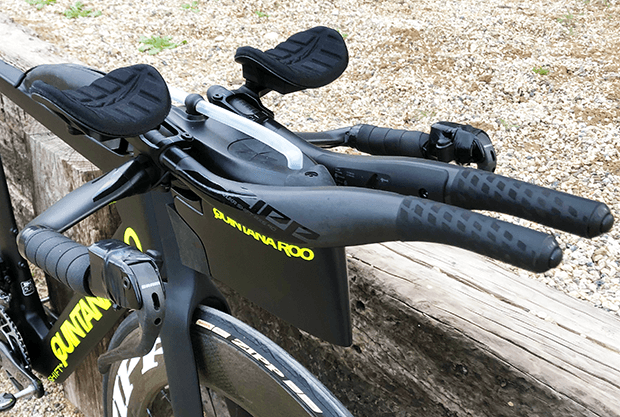
Against this setting may I introduce the Zipp Vuka Shift AXS 90. This is a set of aero extensions that includes the shifters and all the necessary electronics. Including the brains. If you have these extensions on your bike, and you have SRAM AXS eTap front and rear derailleurs, you have an entire shift system. No BlipBox. No wires. Done. Completely wireless shifting.
You can see why the ease of building up a bike with this shift system appeals to my current thinking. I’ve built all this up on a new Quintana Roo PRSix2 frameset, because if you like really clean cable routing this frame is about as clean as you can get, so, paired with this shift system you pretty much can’t do any better at hiding wires and brake line.
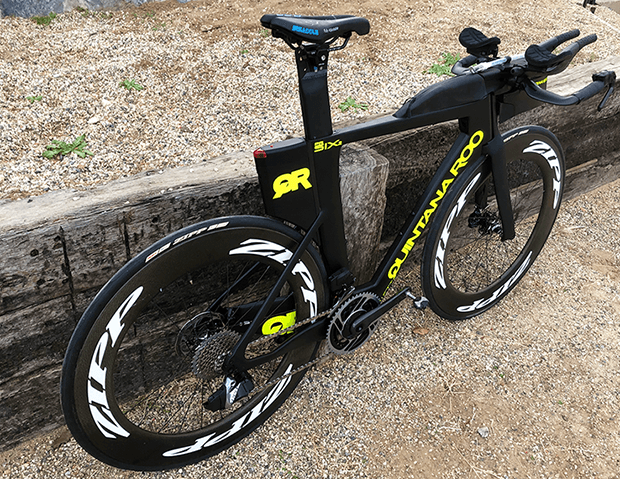
In fact, the only lines that I had to run inside the frameset were the hydraulic brake lines, and I’ll demonstrate that routing process elsewhere. What I did not have to route were shift cables.
Below is a pic of the front end of that PRSix2. It’s very clean. Part of this is due to Quintana Roo doing a very nice job on the stem and fork design, allowing for a clean routing of the hydraulic brake lines. But the other part is, no BlipBox, no junction box, no wires.
Secondly, we’ve written recently about electronic makeovers. You know how I feel about disc brakes and tubeless tires, that I’ve been an early champion of that tech in triathlon, finding utility where most of triathlon failed to appreciate it (at the time). What is more important than any of that is the move to electronic shifting. And I’m talking specifically about 2x tri bike use.
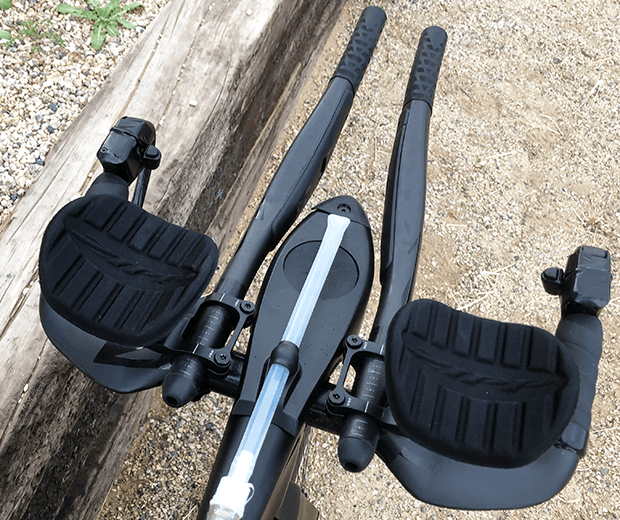
The extensions themselves are not inexpensive. They’re a halo product at $850. They will be sold as extensions only, and with a diameter of 22.2mm they’ll fit in just about any aerobar with clamps that accept round extensions. When I put them on this QR frameset, they paired with the derailleurs just as do road shifters; the whole process takes less than a minute. They are discoverable on SRAM’s AXS app, so I am told, though I have not tried to do this per the protocol. In the AXS app you can change the shifting to sequential, though I’m happiest with the standard pattern, which is left click means the derailleur moves to the chain to the left, right click means to the right, and both buttons simultaneously tells the front derailleur to move the chain to the other ring.
What’s wrong with these extensions? Well, let’s see what fault I can find. There’s the shape, for one. You either do or don’t like it, and if you don’t like it, well, this is what’s available. I found them quite fine, but I also know that ergonomics are important, especially when the bike ride is a long one. The “90” in the name of this product comes from the contour. The extensions rise 90mm.
These shifters are not backward compatible to 11 speed; you can only use them with 12sp SRAM derailleurs, and this makes it pretty well impossible to upgrade from anything. This is a product that you’ll use on a new bike.
SRAM also introduced MultiClics, and while this is not strictly a tri or TT product, it can be used as such, and when I built up this QR I put the MultiClics on there. I have a bit of experience with shifters at the pursuit bars, and what I’ve learned is that I’m prone to the inadvertent shift. When you put shifters anywhere around my hand position in the pursuits, sure as shootin’ I’ll rub up against that button and shift the bike, always at an inopportune time. I need that shifter button where I can reach it, but it can’t be adjacent to where my hand is. The MultiClic is designed to be placed under the handlebar tape (on the "tops" position on road and gravel bikes, and on the pursuits for tri and TT). On the tri installation that SRAM uses in its pics of this product, that’s where it is. And it’s right where my hands go. No can do for me.
But I like this product. I just had to find a way to jimmy it on a place that works for me, and that means not under the handlebar tape. The MultiClic mount offers a way to attach with a zip tie. Fine. But I wrote an article sometime back about The Preparer, a “job” in cycling that is largely not recognized. When in the role of Preparer, my bikes don’t break. They don’t stop shifting, the hydration doesn’t fall off, the chain doesn’t break, the seat doesn’t slide down, the aerobars don’t come loose. They tires don’t even flat. When I prepare a bike for an athlete, that bike functions, as it should, from start to finish. Always. Always.

I say this because my installation of these MultiClics isn’t pretty. I put these on the inside of SRAM's hydraulic pursuit brake levers. But it’s not just affixed with a zip tie. It’s 2 layers of 2-sided tape, and the zip tie, and then plastic tape overtop.
Whether I build a QR, a Canyon or a Cervelo they’re always light, and aero, and they roll fast, but the first order of win-Kona business is no mechanicals. No mechanicals. Hence where I place the MultiClics, and how I attach the MultiClics, knowing full well it’s not going to win a ribbon at the Westminster Dog Show.
The Vuka Shift AXS 90 are wireless. Entirely. Not wireless other than certain wires which is sometimes the case with "wireless." There are no wires. (See the 12-second video above.) But, the MultiClics are not wireless. You must route a wire to a brain. Could be a road shifter. In this case, you route the MultiClic wire to the Vuka Shift AXS 90. You do route this under the handlebar tape, then into the Zipp Vuka pursuit bar or whatever you’re using, then into the extension and forward to the brain. The clicks are $120 a pair.
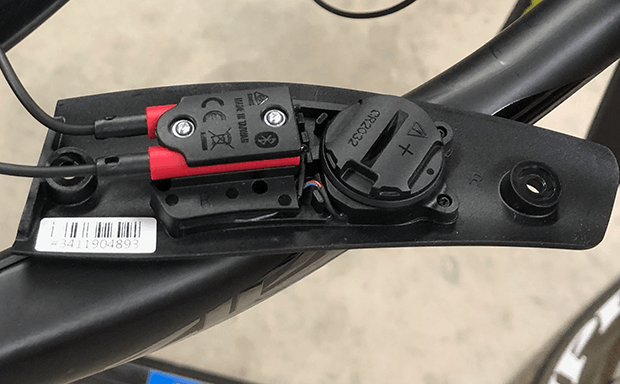
Above you can see the brain inside the extension exposed, and there are 2 ports. The extensions come with one port populated, by the bar-end shifter. The other part has a plug in it. In this case, I’ve removed the plug and plugged in the MultiClic. You can also see where the CR2032 battery goes. There’s about 6 months of battery life in these. The extensions are not rechargeable. Sort of like a Garmin Vector pedal, you change the battery every few months.
You can read more about SRAM’s MultiClics and Zipp’s Vuka Shift AXS 90.


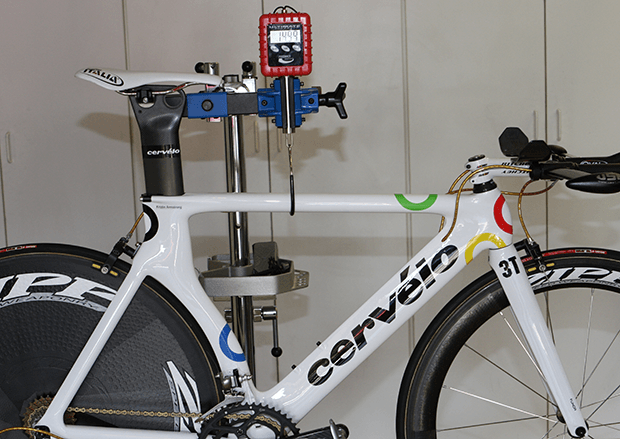
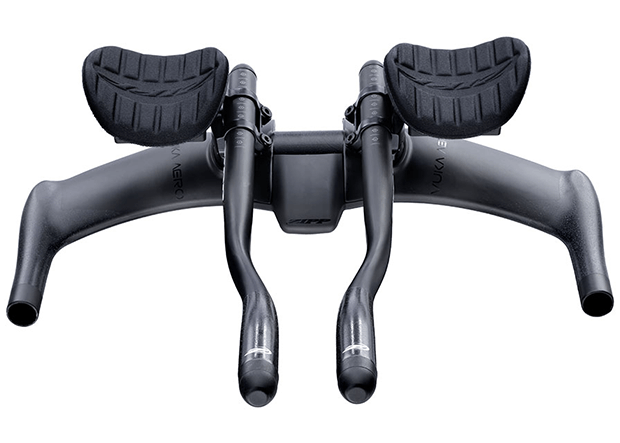
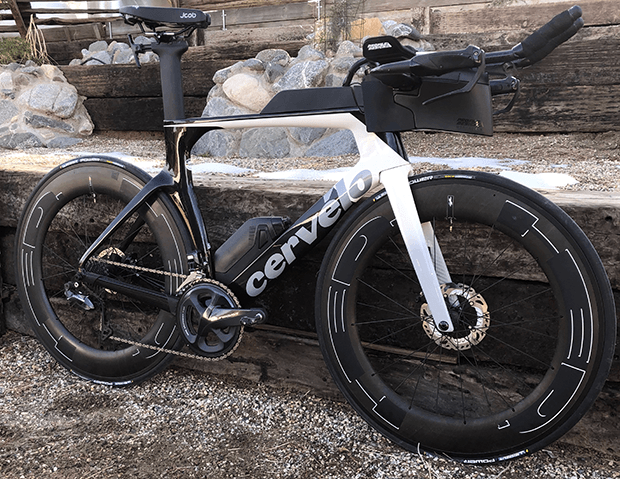
Start the discussion at forum.slowtwitch.com